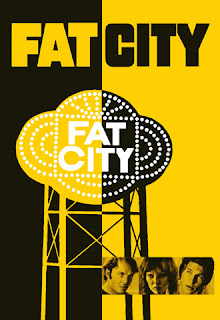There is no glory in Fat City, no inspirational training montage, no world champion fight, nothing but a depressing scuffle between two no-name nobodies. The world is full of characters who's lives just make you want to turn away and forget about them. Oma in particular, is quite pitiable at first, but ends up growing to annoy the audience just as much as she does Tully. From the annoyingly irrational Oma, to the trapped Ernie, the film is essentially a example book of the various land-mines
we try to avoid throughout our lives. A graveyard for destroyed ambitions.
To be quite honest, the audience probably ends up looking at the film much like Tully looks during his final fight, numb, confused, slightly depressed. The film is bleak and batters it's audience with a message of hopelessness, decay, and stagnation. The setting alternates between grimy bars, gyms, apartments, and rings. Everyone's clothes are almost always dirty, hygiene out the window. The characters are depressing and half depressed themselves, plagued with criminal records, alcoholism, broken relationships, and probably mental disorders. The audience is, in essence, left to dig through a pile of garbage, to find the treasure in the trash. Not that the film is bad, mind you, but the subject matter might turn most off of watching the film.
I mean for Christ's sakes look at this guy, not exactly a high-roller. That's our protagonist, someone who likely would have deserved to be yelled at by the old lady in Rocky and called a bum, if that film weren't made after this one. Rocky and Tully do begin their films very similarly, aging nobody boxers who haven't gotten very far in life, but their characters take very different paths. Where Rocky is active and persistent, Tully is passive and lazy. Where Rocky is ambitious, Tully is OK with just getting by. The films portrayal of boxing is pretty negative, but here the critique is not really on boxing itself, it is split between an alternate depiction of the American society that's been praised for it's social mobility, while concealing a "forgotten" segment of the population that has been left in poverty, while also turning the mirror back on America and almost chastising it for it's lack of motivation to change itself.The interactions between Tully and Ernie highlight one of the films central ideas. Almost a reflection of each other, Tully see his past, as well as his missed opportunities in Ernie, whereas Ernie sees a foreboding image of the future in Tully. Both of these characters show promise, and likely have what it takes to succeed, but they let their relationships hamper them. They don't face challenges, they avoid them, make excuses for themselves. Whenever they meet they always discuss their boxing careers or "what went wrong", whats coming up, and there is always something coming up. Because in the end, a crucial part of the Fat City meme, is that it is always slightly out of reach.






I like how you stated "The audience is, in essence, left to dig through a pile of garbage, to find the treasure in the trash" because this is really how it feels when you watch the lifestyle of these characters, especially Tully. It is much different than any other film we have analyzed where we see real potential in the boxer.
ReplyDelete